Transportation Should Be a Bigger Issue in the 2024 Election
As November approaches, the safety, accessibility, and equity of active transit users has, so far, been a footnote at best.
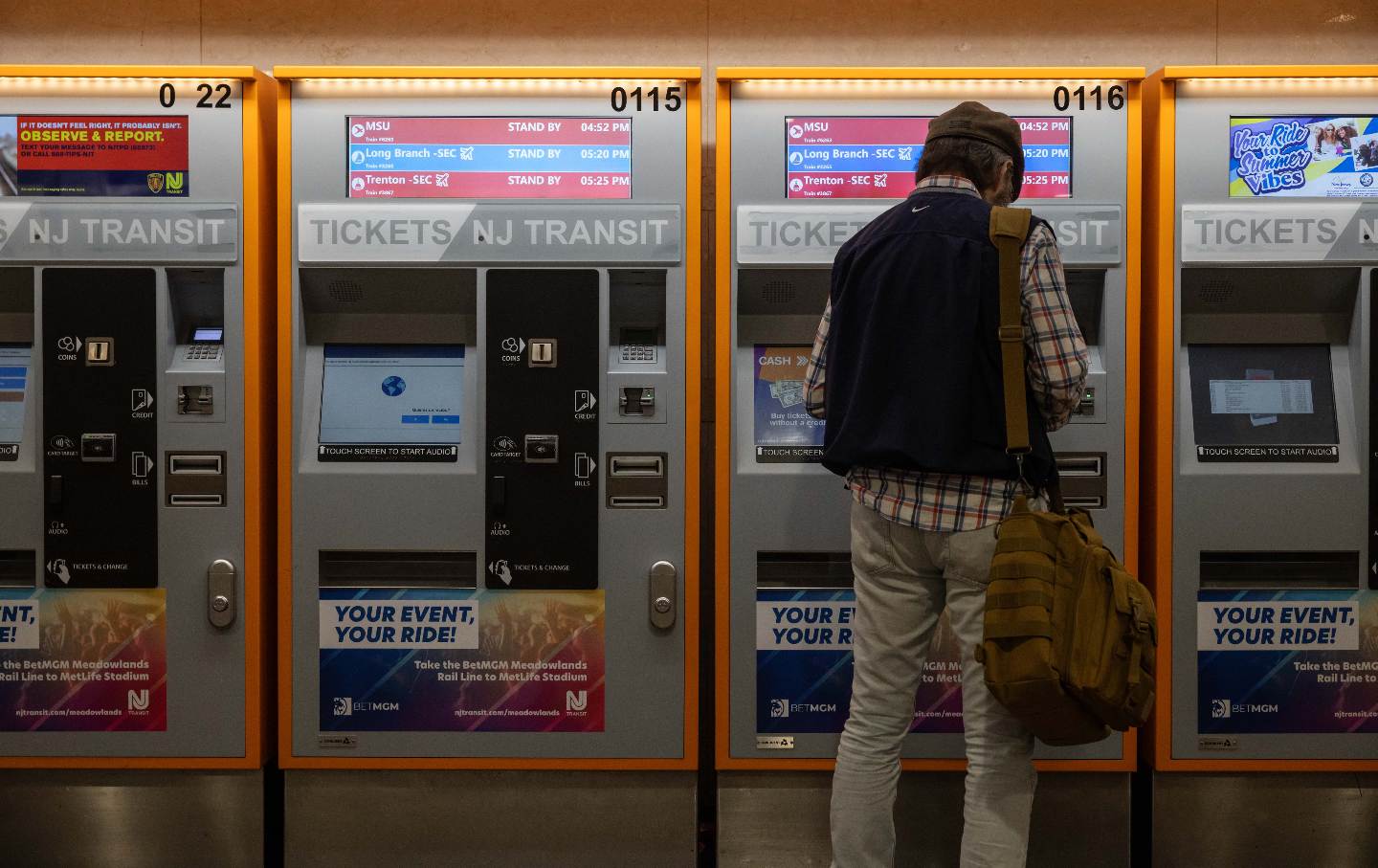
A commuter at a ticket kiosk at New Jersey Transit train station at Penn Station in New York.
(Yuki Iwamura / Getty)
Jamil Modaffari grew up in Penn Yan, New York, a small, rural village of around 5,000 people. His mom didn’t have a driver’s license or access to a car, and public transportation was nonexistent. Their lives changed suddenly when Modaffari’s mother broke her back. Her injury and inability to walk to work forced her to leave her job.
Rural Americans live an average of over 10 miles from the nearest hospital, according to Pew Research Center, and Modaffari’s mother had to travel an hour away to receive medical treatments. But this was only if she could get a ride. Consistent transportation options for Modaffari’s mother would have meant more accessibility to healthcare, resulting in better health outcomes. “If my mother would have had access to transportation that would have got her the healthcare she needed,” said Modaffari, “then maybe she would still be alive.”
Without a mode of transportation—excluding his bike for short distances—Modaffari was also restricted in his community. He was dependent on other people to take him places when and if they could.
“I missed out on so many activities and events, even high school parties because I didn’t have a ride,” Modaffari said. “I know it’s small and it doesn’t mean anything, but those are opportunities to live life growing up. Having to miss sporting events and not being able to go to a camp because you don’t have a way there sucks.”
Modaffari, who now lives in Bella Vista, Arkansas, and works as a policy specialist at the League of American Bicyclists, believes that basic survival heavily depends on access to reliable transportation. “People have to work,” Modaffari said. “People have to make money. Kids have to go to school.… To have a roof over their head, food on their plate, all of these things you need to survive. You have to have some income source and you have to find a way to get to wherever that is.”
The safety, accessibility, and equity of active transit users has, so far, merely been a footnote in the 2024 election. As November approaches, many voters and transportation experts say that these transportation needs and issues should be prioritized.
Design choices make transportation in certain parts of a city inaccessible, unsafe, and unequal, and much of our current transportation infrastructure has racist roots. In 1956, the National Interstate Defense Highways Act established an interstate highway system in the United States, a key campaign promise of President Dwight D. Eisenhower, who valued the need for “a safe and adequate highway system.” But by building through poorer communities, cutting off residents from their homes, this ultimately enhanced suburban living and car dependency in the postwar United States. It also ripped apart vibrant Black communities, causing white flight and the displacement of families and businesses, resulting in socioeconomic desolation and further segregation in these neighborhoods.
These communities still experience the consequences of those policy decisions today, and many young voters believe that transportation should be reframed as a racial equality issue that deserves national attention in the upcoming election.
“You go to community meetings and people are worried for their children about the cars who speed through their neighborhood. They’re worried about getting to the grocery store safely,” said Kai Hall, a coordinating manager for the DC Transportation Equity Network. The voices of those historically left behind in policymaking decisions are silenced, even during national elections. “Part of it is politics, but there are the people who are impacted by the lack of attention paid to transit, predominantly lower-income folks, predominantly Black and brown communities.”
While more voters have cited transportation and infrastructure as critical issues in recent years, it isn’t often thought of as a political issue because people don’t think it can change, said Adah Crandall, an organizer with the Sunrise Movement. “We’ve kind of just accepted that the way things are, is the way that things are always going to be—which in the US means building highways and continuing to expand them in hopes that will somehow solve the problem of traffic, even though it’s proven that’s not how it works.”
To Crandall, this lack of reliable transportation nationwide is an intentional political choice. “If the bus doesn’t come consistently, or if the bus is late and you miss a job interview, and you miss that opportunity because of that, that’s a policy failure. If a kid is getting hit by a car walking or biking to school, that’s a policy failure,” said Crandall. “It doesn’t have to be that way.”
In 2021, the Bipartisan Infrastructure Deal recognized that “America’s public transit infrastructure is inadequate” and that its failures predominantly impact communities of color, who are twice as likely to take public transportation. The bill included funds to rebuild and improve America’s roads, railroads, bridges, and ports and address transportation and environmental infrastructure needs.
Popular
“swipe left below to view more authors”Swipe →Non–car owners should be prioritized in transportation infrastructure choices, said Avi Kaplan, a recent graduate of Stony Brook University on Long Island, New York. “It feels like there’s a vocal uproar when you propose limiting the accessibility of the city to cars, but there’s not really an uproar when you hear there’s not a sidewalk anywhere on Long Island,” he said. In 2022, the federal government spent $52 billion on highways and roads, according to the Congressional Budget Office. But about 30 percent of the US population does not drive, according to All Aboard Northwest.
The lack of prioritization of public transit users is “mind-boggling,” especially in New York City where the subway is iconic, said Caroline Pollak, a recent graduate of the City College of New York. She hopes that more funding will be allotted to rail systems after the upcoming election.
In June, Governor Kathy Hochul paused the congestion relief zone program—“pending necessary approvals”—which would charge drivers a toll for coming in and out of much of Manhattan. Not only would this limit car dependency, lessen pollution, and result in safer, people-centric streets; 8 percent of the revenue would have been spent on improvements to public transportation systems—including the subway.
“What’s important to me is putting money into the train system,” Pollak said. “It’s completely the beating heart of the city. The majority of the people that live here, could not live here if it didn’t exist. I think money needs to be put into fixing whatever makes the train run smoother.”
Young voters also want to live in walkable cities, Hall said. With Generation Z facing higher housing costs, student loans, and increasing wealth inequality, providing affordable transportation to access their community and resources is crucial. “Young people are threading the needle between how auto-centricity, promoted by policies and actions of previous generations, exacerbates climate change, the housing crisis, racial and economic disparities, and a feeling that cities center cars over people,” he said. “Young people recognize that auto-centricity doesn’t benefit them.”
“Part of tackling the climate crisis means building high-speed rail all across the country, stopping the funds for highway expansions, and instead making our communities walkable and bikeable,” said Crandall, “which is something young people are largely enthusiastic about.”
Alyssa Proudfoot Siegel, an organizer for the Washington Area Bicyclist Association, understands that a lot of transportation decisions are hyperlocal, but “having a government that can open the way to that is the biggest step forward,” she said. Voting for presidential candidates with robust public and active transportation policies is essential to leading the country to a better and necessary future, she said. “I am looking forward to seeing what Kamala Harris will do, but also Tim Walz, who has been an amazing advocate for alternative transit.”
Crandall hopes that the next president provides transportation alternatives that “won’t contribute to lighting our planet on fire,” she said. “There are real consequences of a transportation system that doesn’t work for us, both for the climate and also just the impacts in people’s daily lives.”
While Crandall is optimistic about “the engagement and enthusiasm that has skyrocketed” since Kamala Harris became the presidential nominee for the Democratic Party, she also notes that “memes aren’t going to win the election, policy is,” especially to garner the support of young voters.
For Crandall, it’s important to have someone in office who recognizes the impact that transportation systems have on people’s lives and who wants to make changes to decarbonize. But there may be other issues at the forefront of the minds of voters, she said. “It is hard and somewhat unreasonable to expect voters to be thinking that much about their roads and their intersections when hundreds of people have died in climate disasters this year and thousands of people are dying in Gaza because of our elected officials’ actions,” Crandall said. “It is not the most polarizing and pressing thing in the news.”
“The right has put out Project 2025 as a very bold vision of what the future could be,” said Crandall. “It paints a tangible picture of a world that their base can get behind and fight for.” To get voters excited about transportation, Democrats have to put out a bold alternative. “I think it is really important that Harris is putting forward something equally tangible and more compelling that will win young people over. This is not an election where moderate policies can beat out far-right policies.”
We cannot back down
We now confront a second Trump presidency.
There’s not a moment to lose. We must harness our fears, our grief, and yes, our anger, to resist the dangerous policies Donald Trump will unleash on our country. We rededicate ourselves to our role as journalists and writers of principle and conscience.
Today, we also steel ourselves for the fight ahead. It will demand a fearless spirit, an informed mind, wise analysis, and humane resistance. We face the enactment of Project 2025, a far-right supreme court, political authoritarianism, increasing inequality and record homelessness, a looming climate crisis, and conflicts abroad. The Nation will expose and propose, nurture investigative reporting, and stand together as a community to keep hope and possibility alive. The Nation’s work will continue—as it has in good and not-so-good times—to develop alternative ideas and visions, to deepen our mission of truth-telling and deep reporting, and to further solidarity in a nation divided.
Armed with a remarkable 160 years of bold, independent journalism, our mandate today remains the same as when abolitionists first founded The Nation—to uphold the principles of democracy and freedom, serve as a beacon through the darkest days of resistance, and to envision and struggle for a brighter future.
The day is dark, the forces arrayed are tenacious, but as the late Nation editorial board member Toni Morrison wrote “No! This is precisely the time when artists go to work. There is no time for despair, no place for self-pity, no need for silence, no room for fear. We speak, we write, we do language. That is how civilizations heal.”
I urge you to stand with The Nation and donate today.
Onwards,
Katrina vanden Heuvel
Editorial Director and Publisher, The Nation
More from The Nation
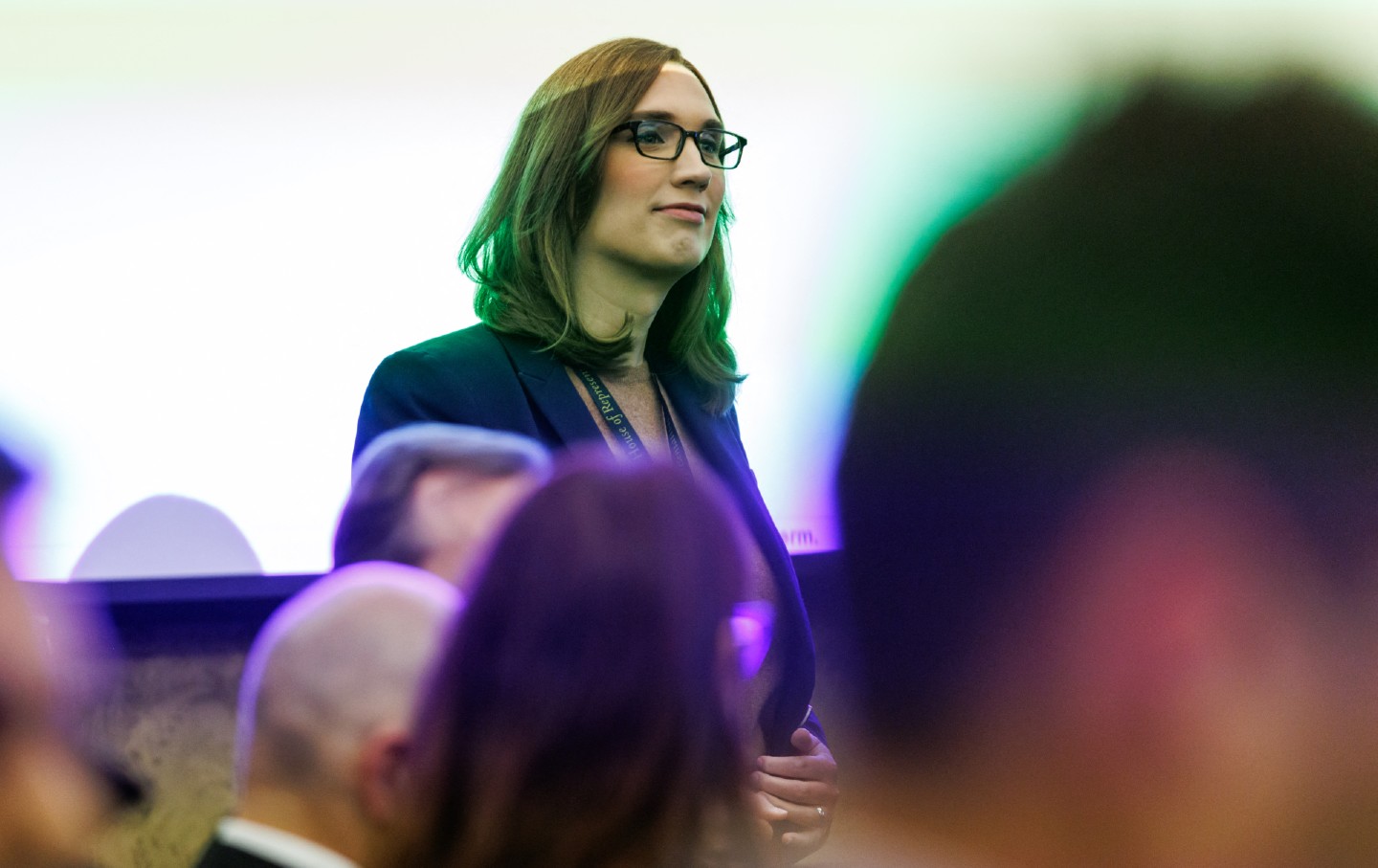
The Red Wave Didn't Hit State Houses in This Election The Red Wave Didn't Hit State Houses in This Election
State-level Democrats largely held their ground, even scoring key victories in battleground states—and under Trump, that's going to matter.
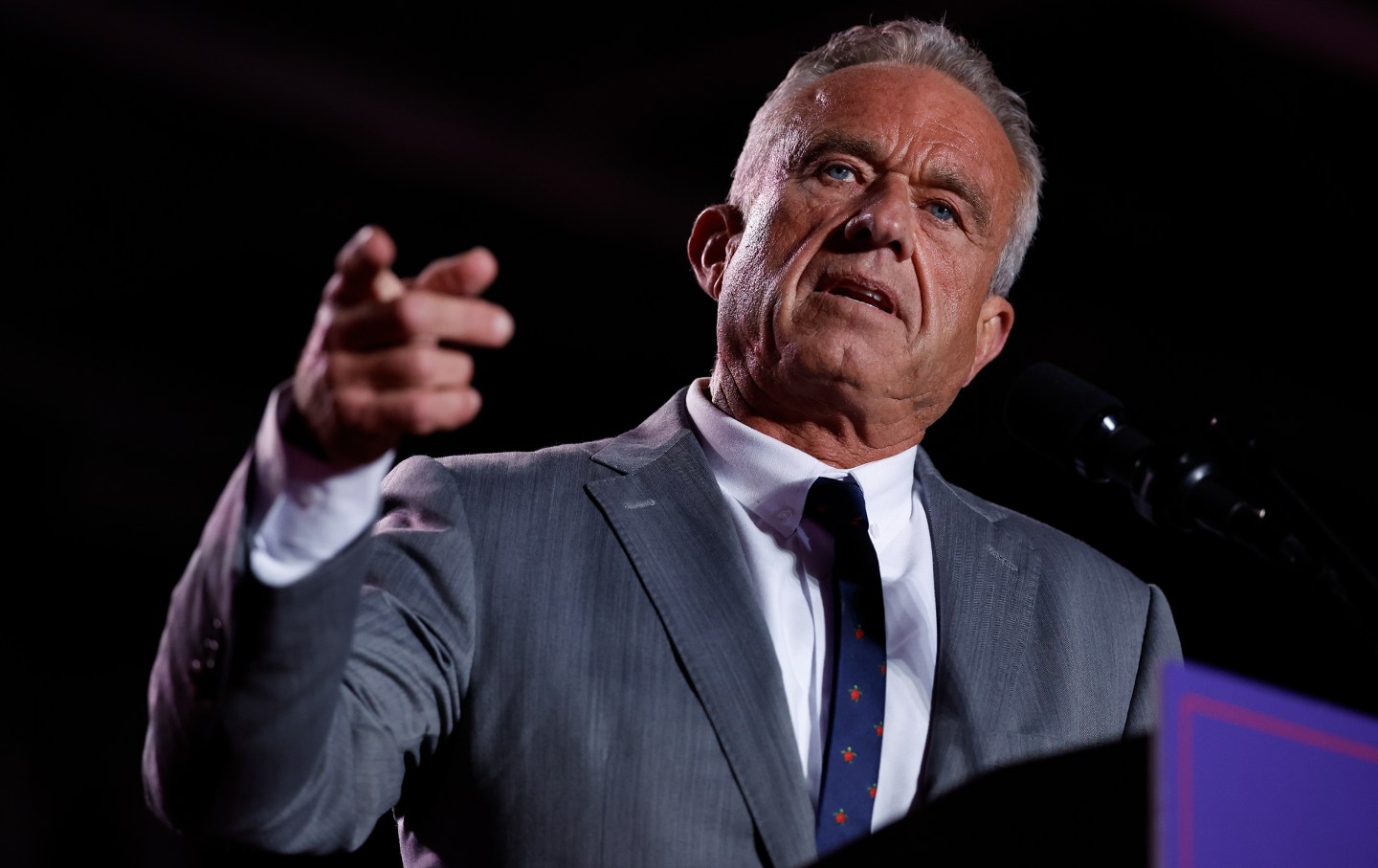
How Nominally Pro-Choice RFK Jr. Can Get Anti-Abortion Groups to Back His HHS Nomination How Nominally Pro-Choice RFK Jr. Can Get Anti-Abortion Groups to Back His HHS Nomination
He can pick a strident abortion opponent like Roger Severino, who wrote the Project 2025 chapter on HHS, as his number two.
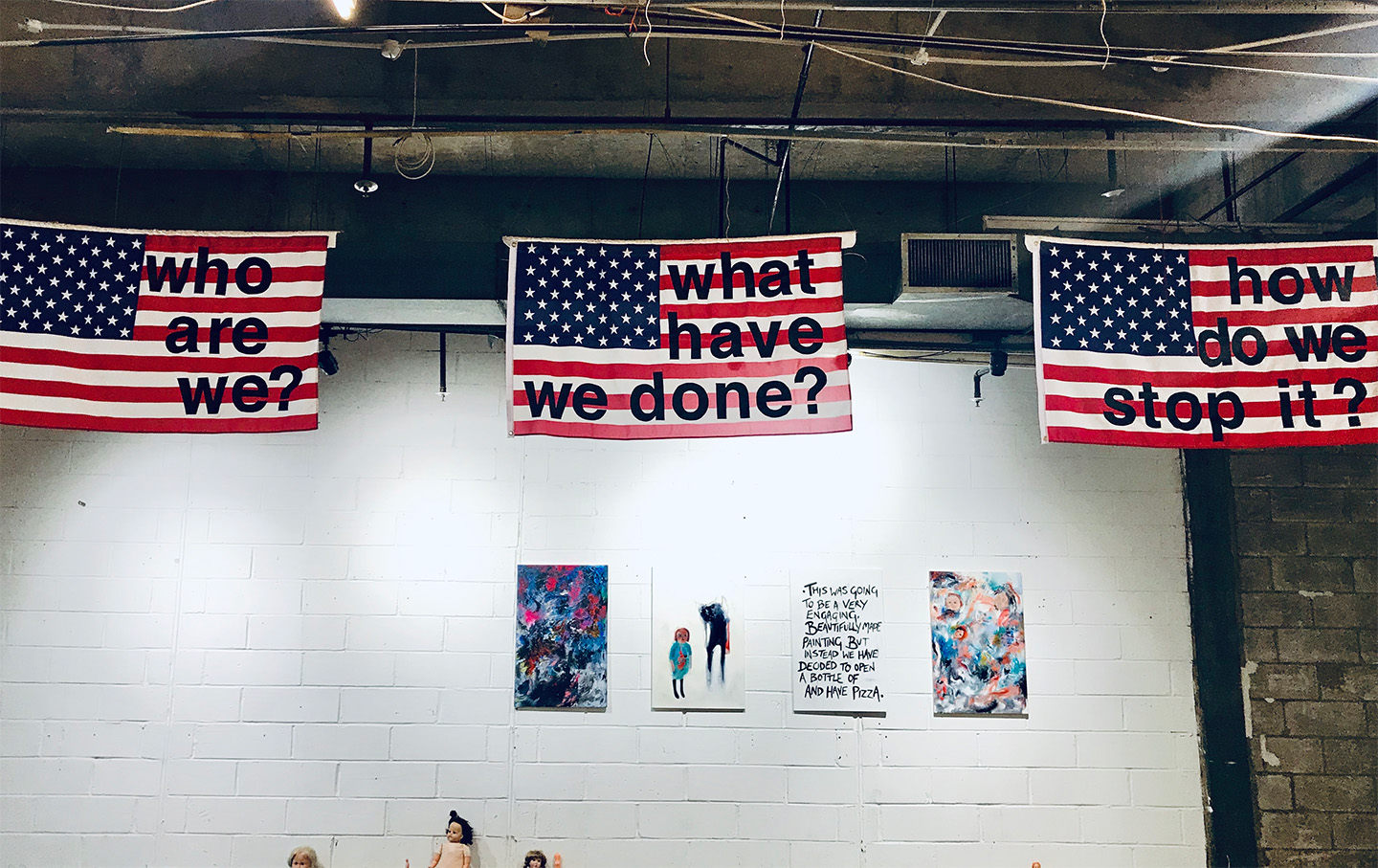
Red Flags Red Flags
The result of the presidential election reflects individual and collective responsibility.
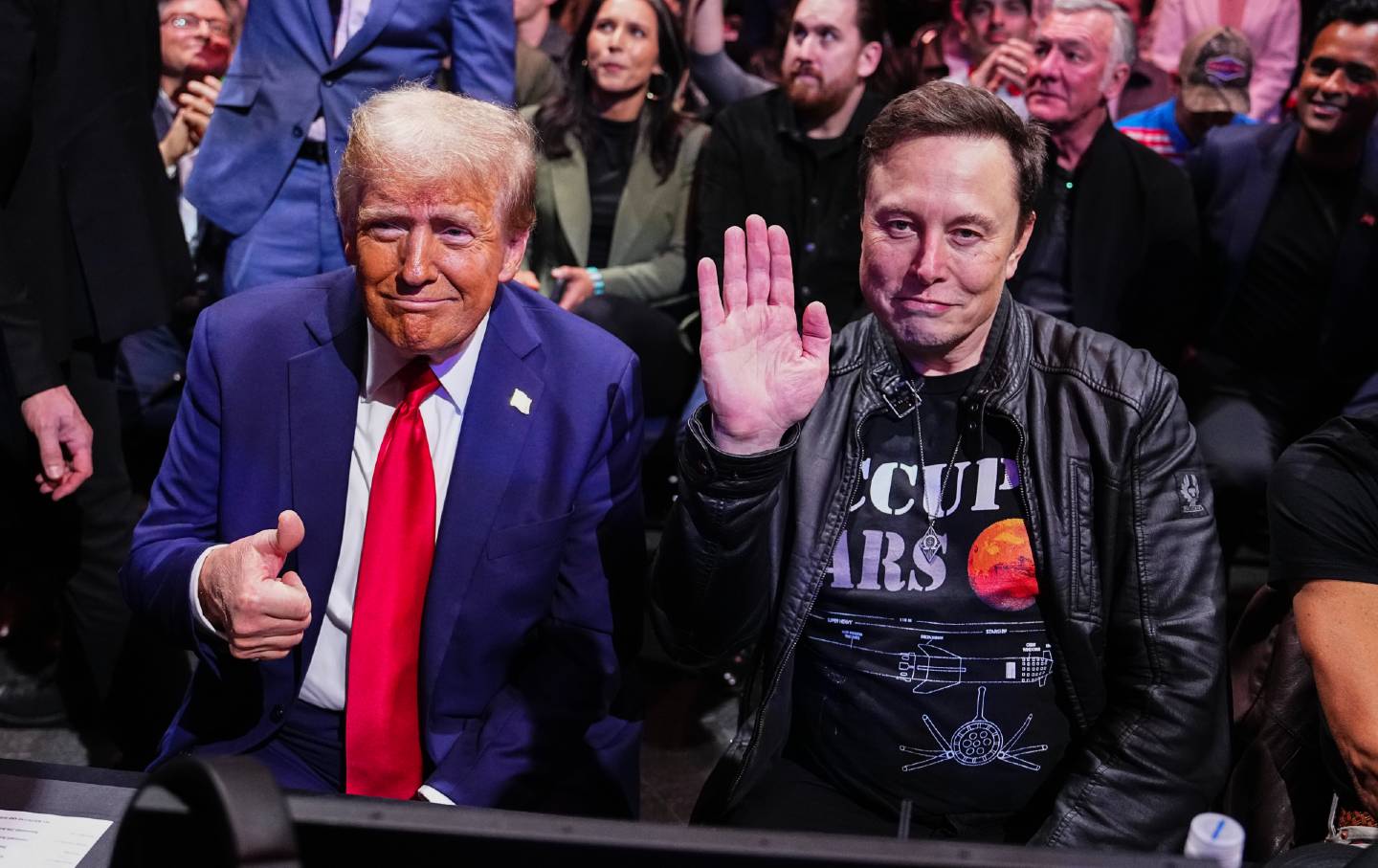
How Loyalty Trumps Qualification in Trump Universe How Loyalty Trumps Qualification in Trump Universe
Meet “first buddy” Elon Musk.
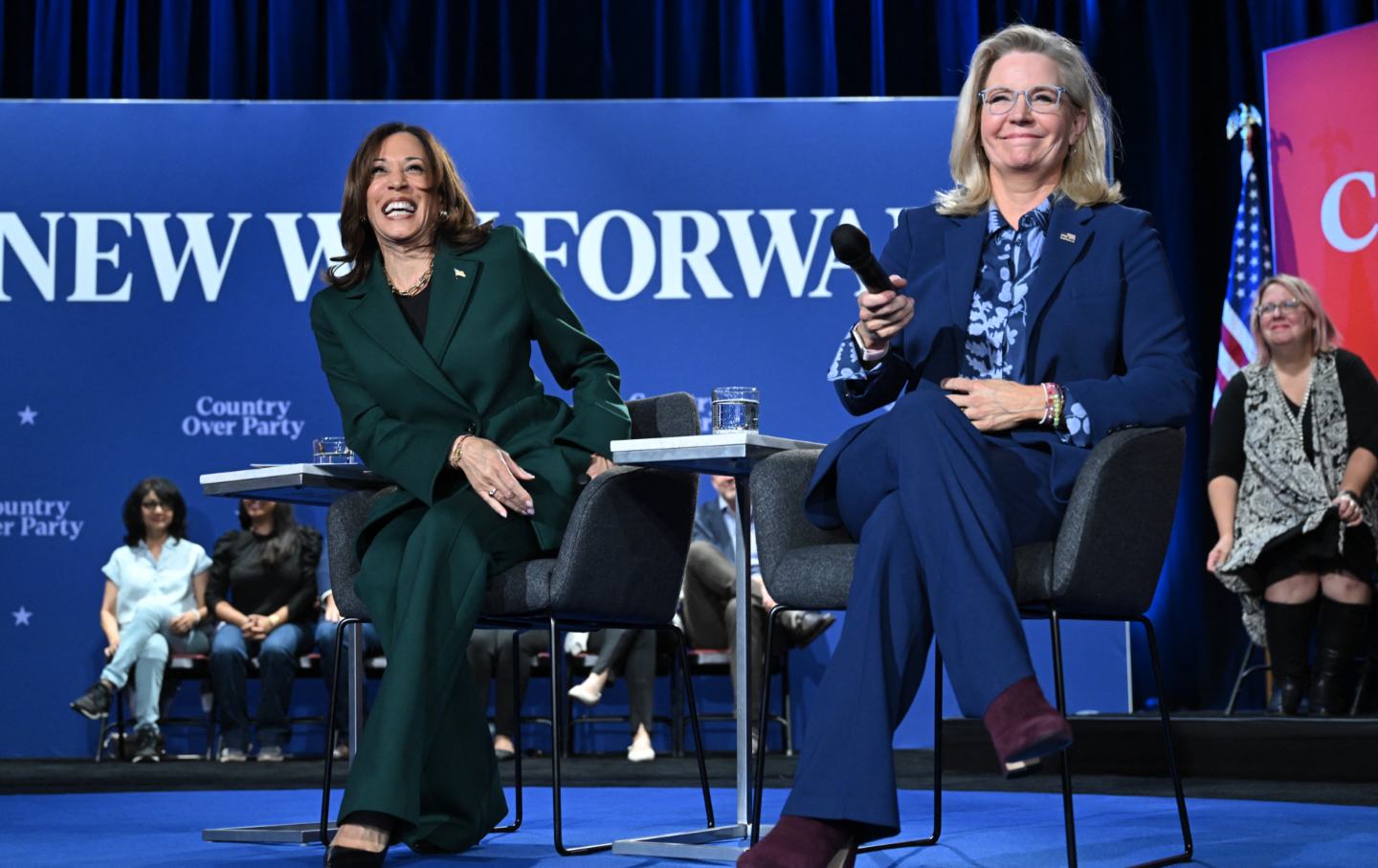
Bury the #Resistance, Once and For All Bury the #Resistance, Once and For All
It had a bad run, and now it’s over. Let’s move on and find a new way to fight the right.
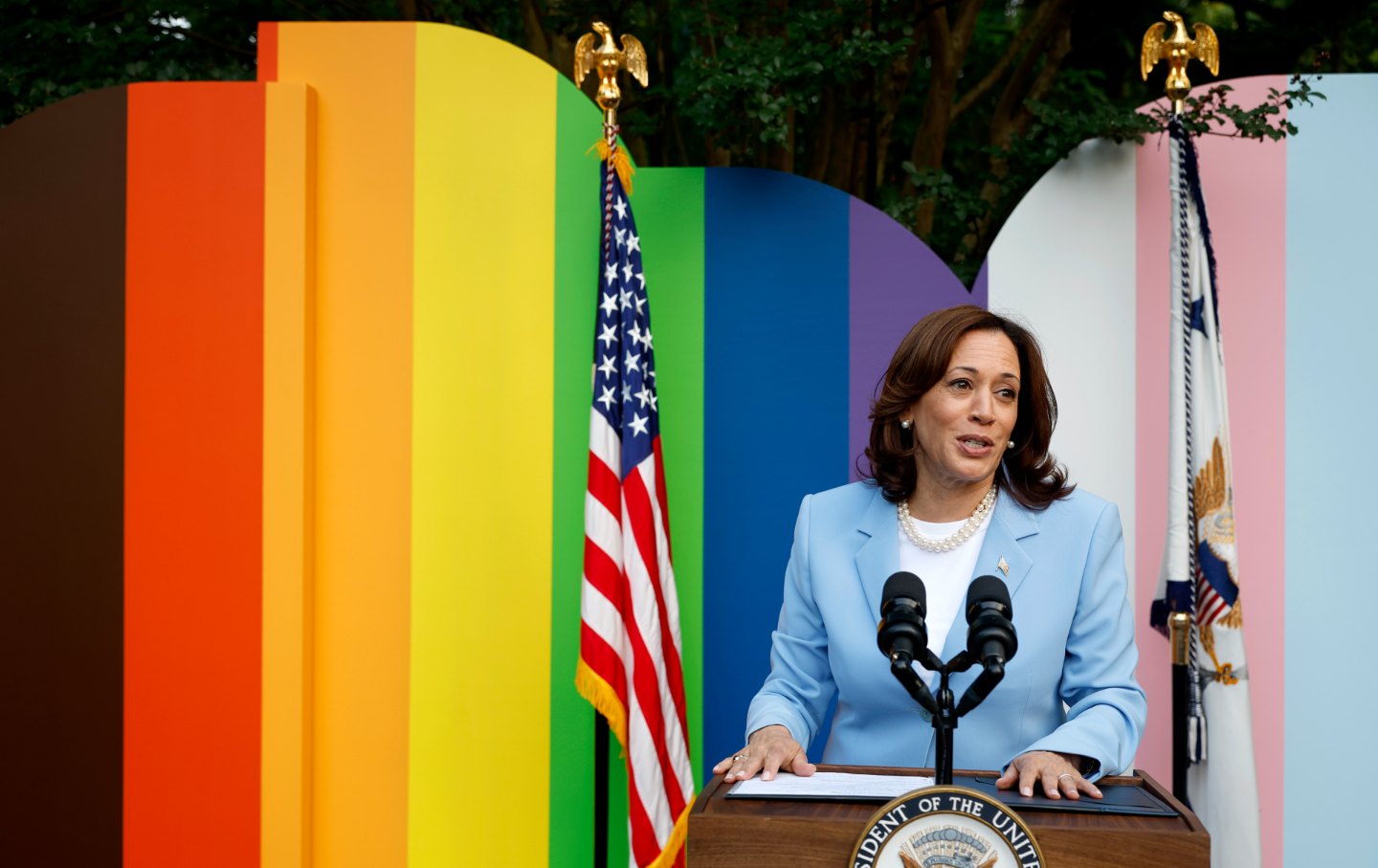
Trans People Shouldn’t Be Scapegoated for Democrats’ Failures Trans People Shouldn’t Be Scapegoated for Democrats’ Failures
Politicians and pundits are stoking a backlash to trans rights in the wake of the election. They’re playing a dangerous game.


